digital bangladesh:
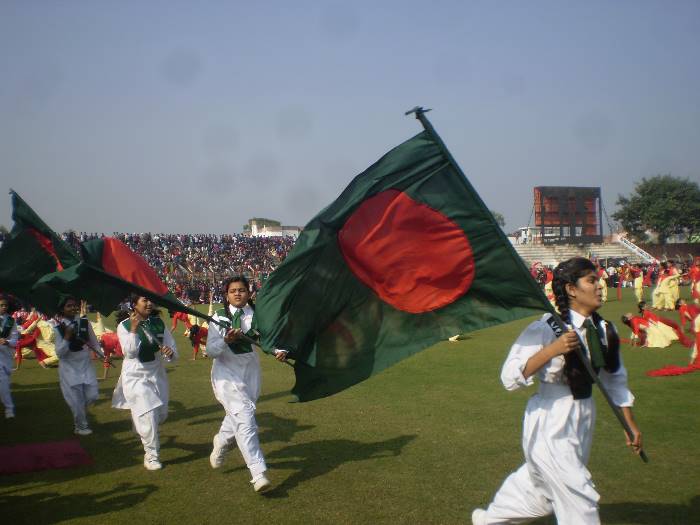
Early and medieval periods:
.jpg)
Gold coin (around 670 CE) from the rule of King Rajabhata of the Khadga tradition
Stone Age devices found in Bangladesh demonstrate human home for more than 20,000 years, and leftovers of Copper Age settlements go back 4,000 years. Antiquated Bengal was settled by Austroasiatics, Tibeto-Burmans, Dravidians and Indo-Aryans in back to back influxes of relocation. Archeological proof affirms that by the second thousand years BCE, rice-developing groups possessed the area. By the eleventh century individuals lived in fundamentally adjusted lodging, covered their dead, and fabricated copper decorations and dark and red stoneware. The Ganges, Brahmaputra and Meghna waterways were normal supply routes for correspondence and transportation, and estuaries on the Bay of Bengal allowed oceanic exchange. The early Iron Age saw the advancement of metal weaponry, coinage, agribusiness and water system. Major urban settlements shaped amid the late Iron Age, in the mid-first thousand years BCE, when the Northern Black Polished Ware culture created. In 1879, Alexander Cunningham recognized Mahasthangarh as the capital of the Pundra Kingdom specified in the Rigveda.
Greek and Roman records of the old Gangaridai Kingdom, which (as per legend) stopped the attack of Alexander the Great, are connected to the fortification city in Wari-Bateshwar. The site is likewise related to the prosperous exchanging focal point of Souanagoura recorded on Ptolemy's reality delineate. Roman geographers noticed a huge seaport in southeastern Bengal, relating to the present-day Chittagong district.
Antiquated Buddhist and Hindu states which ruled Bangladesh incorporated the Vanga, Samatata and Pundra kingdoms, the Maurya and Gupta Empires, the Varman administration, Shashanka's kingdom, the Khadga and Candra traditions, the Pala Empire, the Sena line, the Harikela kingdom and the Deva line. These states had very much created monetary forms, keeping money, delivery, design and workmanship, and the old colleges of Bikrampur and Mainamati facilitated researchers and understudies from different parts of Asia. Xuanzang of China was a prominent researcher who dwelled at the Somapura Mahavihara (the biggest cloister in antiquated India), and Atisa made a trip from Bengal to Tibet to lecture Buddhism. The most punctual type of the Bengali dialect started to the develop amid the eighth century.
Islamization:
.jpg)
The fifteenth century Sixty Dome Mosque worked amid the Bengal Sultanate is presently an UNESCO World Heritage Site
Early Muslim wayfarers and teachers touched base in Bengal late in the main thousand years CE. The Islamic triumph of Bengal started with the 1204 intrusion by Bakhtiar Khilji; in the wake of attaching Bengal to the Delhi Sultanate, Khilji pursued a military battle in Tibet. Bengal was controlled by the Delhi Sultanate for a century by governors from the Khilji, Mamluk, Balban and Tughluq traditions. Amid the fourteenth century, an autonomous Bengal Sultanate was set up by revolt governors. The sultanate's decision houses incorporated the Ilyas Shahi, Jalaluddin Muhammad Shah, Hussain Shahi, Suri and Karrani administrations, and the time saw the presentation of a particular mosque design and the tangka money. The Arakan area was brought under Bengali authority. The Bengal Sultanate was gone to by wayfarers Ibn Battuta, Admiral Zheng He and Niccolo De Conti. Amid the late sixteenth century, the Baro-Bhuyan (a confederation of Muslim and Hindu privileged people) ruled eastern Bengal; its pioneer was the Mansad-e-Ala, a title held by Isa Khan and his child Musa Khan. The Khan administration are viewed as nearby legends for opposing North Indian intrusions with their waterway naval forces.
The Mughal Empire controlled Bengal by the seventeenth century. Amid the rule of Emperor Akbar, the Bengali agrarian logbook was improved to encourage charge accumulation. The Mughals built up Dhaka as a post city and business city, and it was the capital of Mughal Bengal for a long time. In 1666, the Mughals removed the Arakanese from Chittagong. Mughal Bengal pulled in outside brokers for its muslin and silk merchandise, and the Armenians were a striking shipper group. A Portuguese settlement in Chittagong prospered in the southeast, and a Dutch settlement in Rajshahi existed in the north. Amid the eighteenth century, the Nawabs of Bengal turned into the area's accepted rulers. The Nawabs manufactured organizations together with European pilgrim organizations, which made the locale moderately prosperous right on time in the century.
The Bengali Muslim populace was a result of transformation and religious development, and their pre-Islamic convictions included components of Buddhism and Hinduism. The development of mosques, Islamic foundations (madrasas) and Sufi cloisters (khanqahs) encouraged transformation, and Islamic cosmology assumed a noteworthy part in creating Bengali Muslim society. Researchers have speculated that Bengalis were pulled in to Islam by its populist social request, which stood out from the Hindu station framework. By the fifteenth century, Muslim artists were writing in the Bengali dialect. Remarkable medieval Bengali Muslim writers included Daulat Qazi, Abdul Hakim and Alaol. Syncretic cliques, for example, the Baul development, rose on the edges of Bengali Muslim society. The Persianate culture was noteworthy in Bengal, where urban areas like Sonargaon turned into the easternmost focuses of Persian impact.
British Empire:
After the 1757 Battle of Plassey, Bengal was the primary locale of the Indian subcontinent vanquished by the British East India Company. The organization shaped the Presidency of Fort William, which regulated the area until 1858. A striking part of organization administer was the Permanent Settlement, which built up the primitive zamindari framework. Various starvations, including the colossal Bengal starvation of 1770, happened under organization run the show. A few uprisings broke out amid the mid nineteenth century (counting one drove by Titumir), however British govern uprooted the Muslim decision class. A preservationist Islamic pastor, Haji Shariatullah, looked to oust the British by proliferating Islamic revivalism. A few towns in Bangladesh took part in the Indian Mutiny and vowed loyalty to the last Mughal ruler, Bahadur Shah Zafar, who was later banished to neighboring Burma.
.png)
Head administrators of Bengal A. K. Fazlul Huq, Khawaja Nazimuddin and H. S. Suhrawardy.
The test postured to organization control by the fizzled Indian Mutiny prompted the production of the British Indian Empire as a crown province, and the primary railroad was worked in 1862. Syed Ahmed Khan and Ram Mohan Roy advanced present day and liberal training on the subcontinent, rousing the Aligarh development and the Bengal Renaissance. Amid the late nineteenth century, authors, social reformers and women's activists risen up out of Muslim Bengali society. Power and metropolitan water frameworks were presented in the 1890s; films opened in numerous towns amid the mid twentieth century. East Bengal's estate economy was essential to the British Empire, especially its jute and tea. The British set up tax-exempt waterway ports, for example, the Port of Narayanganj, and vast seaports like the Port of Chittagong.
Social strains likewise expanded under British control, especially between well off Hindus and the Muslim-lion's share populace. The Permanent Settlement made a large number of Muslim laborers occupants of Hindu homes, and disdain of the Hindu landed upper class developed. Bolstered by the Muslim gentry, the British government made the region of Eastern Bengal and Assam in 1905, the new region got expanded interest in training, transport and industry. Be that as it may, the main segment of Bengal made a hubbub in Calcutta and the Indian National Congress. Because of developing Hindu patriotism, the All India Muslim League was framed in Dhaka amid the 1906 All India Muhammadan Educational Conference. The British government revamped the areas in 1912, rejoining East and West Bengal and making Assam a moment region.
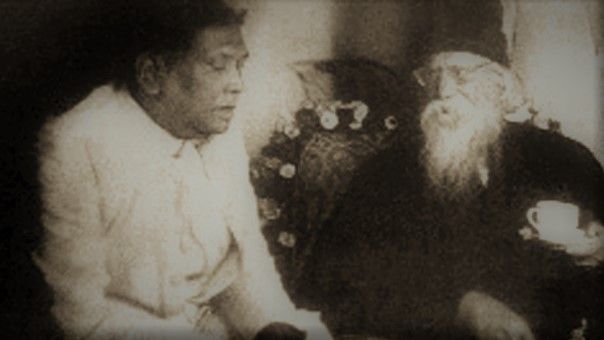
A. K. Fazlul Huq, the main head administrator of Bengal, with Nobel laureate Rabindranath Tagore
The Raj was ease back to permit self-govern in the provincial subcontinent. It built up the Bengal Legislative Council in 1862, and the committee's local Bengali portrayal expanded amid the mid twentieth century. The Bengal Provincial Muslim League was shaped in 1913 to advocate social equality for Bengali Muslims inside a protected structure. Amid the 1920s, the group was partitioned into groups supporting the Khilafat development and favoring participation with the British to accomplish self-run the show. Sections of the Bengali first class upheld Mustafa Kemal Ataturk secularist powers. In 1929, the All Bengal Tenants Association was shaped in the Bengal Legislative Council to counter the impact of the Hindu landed upper class, and the Indian Independence and Pakistan Movements fortified amid the mid twentieth century. After the Morley-Minto Reforms and the diarchy time in the lawmaking bodies of British India, the British government guaranteed constrained commonplace self-governance in 1935. The Bengal Legislative Assembly, British India's biggest lawmaking body, was set up in 1937.
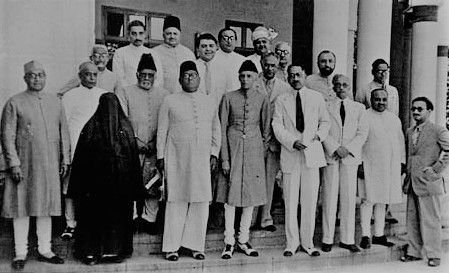
The All India Muslim League's Lahore Resolution Working Committee, in which Bengal was spoken to by A. K. Fazlul Huq and Khawaja Nazimuddin.
Despite the fact that it won a lion's share of seats in 1937, the Bengal Congress boycotted the lawmaking body. A. K. Fazlul Huq of the Krishak Praja Party was chosen as the main Prime Minister of Bengal. In 1940, Huq upheld the Lahore Resolution, which imagined autonomous states in the northwestern and eastern Muslim-dominant part districts of the subcontinent. The principal Huq service, a coalition with the Bengal Provincial Muslim League, kept going until 1941, it was trailed by a Huq coalition with the Hindu Mahasabha which endured until 1943. Huq was prevailing by Khawaja Nazimuddin, who pondered the impacts of the Burma Campaign, the Bengal starvation of 1943 and the Quit India development. In 1946, the Bengal Provincial Muslim League won the commonplace decision, taking 113 of the 250-situate get together (the biggest Muslim League command in British India). H. S. Suhrawardy, who attempted for a United Bengal in 1946, was the last chief of Bengal.
Segment of Bengal:
On 3 June 1947 Mountbatten Plan laid out the parcel of British India. On 20 June, the Bengal Legislative Assembly met to settle on the segment of Bengal. At the preparatory joint meeting, it was chosen (120 votes to 90) that if the region stayed joined it should join the Constituent Assembly of Pakistan. At a different meeting of lawmakers from West Bengal, it was chosen (58 votes to 21) that the territory ought to be parceled and West Bengal should join the Constituent Assembly of India. At another meeting of lawmakers from East Bengal, it was chosen (106 votes to 35) that the region ought not be divided and (107 votes to 34) that East Bengal should join the Constituent Assembly of Pakistan if Bengal was parceled. On 6 July, the Sylhet locale of Assam voted in a submission to join East Bengal.
Cyril Radcliffe was entrusted with drawing the fringes of Pakistan and India, and the Radcliffe Line set up the outskirts of present-day Bangladesh. The Dominion of Pakistan was made on 14 August 1947.
.svg.png)
The Dominion of Pakistan in 1947, with East Bengal its eastern part;
Union with Pakistan (1947–1971);
East Bengal, with Dhaka its capital, was the most crowded territory of the 1947 Pakistani organization (drove by Governor General Muhammad Ali Jinnah, who guaranteed opportunity of religion and mainstream vote based system in the new state). East Bengal was likewise Pakistan's most cosmopolitan area, home to people groups of various religions, societies and ethnic gatherings. Parcel gave expanded financial chance to East Bengalis, delivering a urban populace amid the 1950s.
Khawaja Nazimuddin was East Bengal's first boss pastor with Frederick Chalmers Bourne its senator. The All Pakistan Awami Muslim League was shaped in 1949 as a middle left contrasting option to the inside right All Pakistan Muslim League.[citation needed] In 1950, the East Bengal Legislative Assembly sanctioned land change, abrogating the Permanent Settlement and the zamindari framework. The 1952 Bengali Language Movement was the main indication of grating between the nation's geologically isolated wings. The Awami Muslim League was renamed the more-mainstream Awami League in 1953. The primary constituent get together was broken down in 1954, this was tested by its East Bengali speaker, Maulvi Tamizuddin Khan. The United Front coalition cleared aside the Muslim League in an avalanche triumph in the 1954 East Bengali authoritative decision. The next year, East Bengal was renamed East Pakistan as a major aspect of the One Unit program and the region turned into a fundamental piece of the Southeast Asia Treaty Organization.
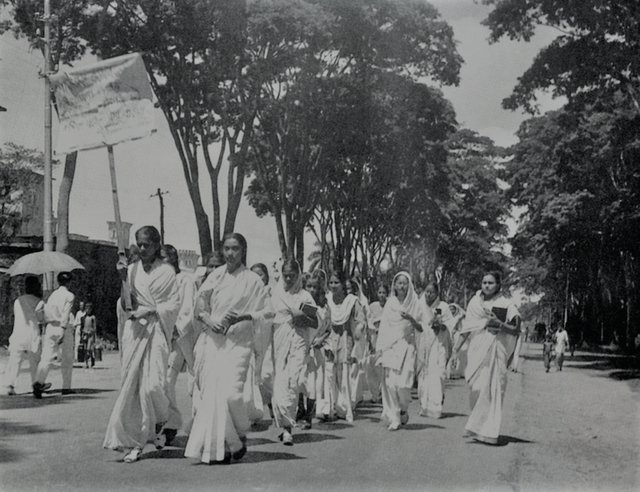
Female understudies walk in resistance of the Section 144 forbiddance on gathering amid the Bengali Language Movement in mid 1953.
Pakistan embraced its first constitution in 1956. Three Bengalis were its Prime Minister until 1957, Nazimuddin, Mohammad Ali of Bogra and Suhrawardy. None of the three finished their terms, and surrendered from office. The Pakistan Army forced military lead in 1958, and Ayub Khan was the nation's strongman for a long time. Political suppression expanded after the upset. Khan presented another constitution in 1962, supplanting Pakistan's parliamentary framework with a presidential and gubernatorial framework (in light of constituent school choice) known as Basic Democracy. In 1962 Dhaka turned into the seat of the National Assembly of Pakistan, a move seen as conciliating expanded Bengali patriotism. The Pakistani government constructed the dubious Kaptai Dam, dislodging the Chakma individuals from their indigenous country in the Chittagong Hill Tracts. Amid the 1965 presidential decision, Fatima Jinnah lost to Ayub Khan in spite of help from the Combined Opposition union (which incorporated the Awami League). The Indo-Pakistani War of 1965 blocked cross-fringe transport joins with neighboring India in what is depicted as a moment parcel. In 1966, Awami League pioneer Sheik Mujibur Rahman declared a six point development for a government parliamentary majority rules system.
As indicated by senior World Bank authorities, Pakistan honed broad monetary oppression East Pakistan: more prominent government spending on West Pakistan, money related exchanges from East to West Pakistan, the utilization of East Pakistan's outside trade surpluses to back West Pakistani imports, and refusal by the focal government to discharge stores apportioned to East Pakistan on the grounds that past spending had been under spending plan, East Pakistan created 70 percent of Pakistan's fare income with its jute and tea. Sheik Mujibur Rahman was captured for treachery in the Agartala Conspiracy Case, and was discharged amid the 1969 uprising in East Pakistan which brought about Ayub Khan's abdication. General Yahya Khan expected power, reintroducing military law.
Ethnic and phonetic separation was regular in Pakistan's polite and military administrations, in which Bengalis were under-spoken to. Fifteen percent of Pakistani focal government workplaces were possessed by East Pakistanis, who shaped 10 percent of the military. Social segregation likewise won, making East Pakistan produce a particular political character. Pakistan prohibited Bengali writing and music in state media, including crafted by Nobel laureate Rabindranath Tagore. A violent wind crushed the shore of East Pakistan in 1970, executing an expected 500,000 individuals, and the focal government was scrutinized for its poor reaction. After the December 1970 races, requires the autonomy of East Bengal ended up plainly louder, the Bengali-patriot Awami League won 167 of 169 East Pakistani seats in the National Assembly. The League guaranteed the privilege to shape an administration and build up another constitution, yet was emphatically contradicted by the Pakistani military and the Pakistan Peoples Party (drove by Zulfikar Ali Bhutto).
War of Independence:
The Bengali populace was irritated when Prime Minister-choose Sheik Mujibur Rahman was kept from taking office. Common defiance emitted crosswise over East Pakistan, with calls for autonomy. Rahman tended to an ace autonomy rally in Dacca on 7 March 1971. The Bangladeshi banner was raised out of the blue on 23 March, Pakistan's Republic Day. Amid the evening of 25 March, the Pakistani military junta drove by Yahya Khan propelled Operation Searchlight (a maintained military strike on East Pakistan) and held Rahman in military care. The Pakistan Army, with assistance from supporting state armies, slaughtered Bengali understudies, scholarly people, lawmakers, government workers and military deserters in the 1971 Bangladesh genocide. A few million outcasts fled to neighboring India. Appraisals of the number slaughtered amid the war run from 300,000 to three million. Worldwide general feeling betrayed Pakistan as news of the abominations spread, the Bangladesh development was upheld by unmistakable political and social figures in the West, including Ted Kennedy, George Harrison, Bob Dylan, Joan Baez, Victoria Ocampo and Andre Malraux. The Concert for Bangladesh was held at Madison Square Garden in New York City to raise reserves for Bangladeshi displaced people. The principal real advantage show ever, it was sorted out by Harrison and Indian Bengali sitarist Ravi Shankar.
Amid the Bangladesh Liberation War, Bengali patriots pronounced freedom and framed the Mukti Bahini (the Bangladeshi National Liberation Army). The Provisional Government of Bangladesh was set up on 17 April 1971, changing over the 469 chose individuals from the Pakistani national gathering and East Pakistani common get together into the Constituent Assembly of Bangladesh. The temporary government provided the Proclamation of Bangladeshi Independence, which was the nation's between time constitution and proclaimed "uniformity, human pride and social equity" as its essential standards. Because of Rahman's detainment, the acting president was Syed Nazrul Islam. Tajuddin Ahmad was Bangladesh's initially PM. The military wing of the temporary government was the Bangladesh Forces. Driven by General M. A. G. Osmani and eleven part authorities, the powers held the Bengali farmland amid the war and directed boundless guerrilla operations against Pakistani powers. Neighboring India and its pioneer, Indira Gandhi (a long-term adversary of Pakistan), gave significant help to the Bangladesh Forces and mediated in help of the temporary government on 3 December 1971. The Soviet Union and the United States dispatched maritime powers to the Bay of Bengal in a Cold War standoff amid the Indo-Pakistani War. The nine-month war finished with the surrender of Pakistan's military to the Bangladesh-India Allied Forces on 16 December 1971. Under universal weight, Pakistan discharged Rahman from detainment on 8 January 1972 and he was flown by the Royal Air Force to a million-in number homecoming in Dacca. Indian troops were pulled back by 12 March 1972, three months after the war finished.
The reason for Bangladeshi self-assurance was perceived around the world.By the season of its admission to UN participation in August 1972, the new state was perceived by 86 nations. Pakistan perceived Bangladesh in 1974 after weight from the vast majority of the Muslim world.
Bangladesh;
In the first place parliamentary period:
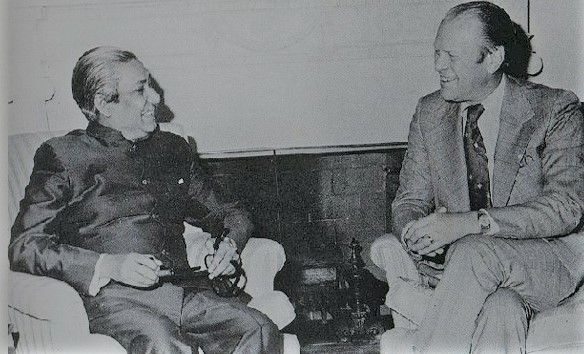
Head administrator Sheik Mujibur Rahman and U.S. president Gerald Ford in 1974.
The constituent get together received Bangladesh's constitution on 4 November 1972, setting up a mainstream, multiparty parliamentary majority rules system. The new constitution included references to communism, and Prime Minister Sheik Mujibur Rahman nationalized real ventures in 1972. A noteworthy reproduction and recovery program was propelled. The Awami League won the nation's initially broad decision in 1973, securing a huge larger part in the Jatiyo Sangshad. Bangladesh joined the Commonwealth of Nations, the UN, the OIC and the Non-Aligned Movement, and Rahman fortified ties with India. In the midst of developing tumult by the resistance National Awami Party and National Socialist Party, he turned out to be progressively dictator. Rahman corrected the constitution, giving himself more crisis powers (counting the suspension of key rights). The Bangladesh starvation of 1974 additionally intensified the political circumstance.
Presidential period and overthrows (1975– 1991);
In January 1975, Sheik Mujibur Rahman presented one-party communist run under BAKSAL. Rahman prohibited all daily papers with the exception of four state-claimed distributions, and changed the constitution to build his energy. He was killed amid an upset on 15 August 1975. Military law was proclaimed, and the administration go to the usurper Khondaker Mostaq Ahmad for four months. Ahmad is generally viewed as a quisling by Bangladeshis. Tajuddin Ahmad, the country's initially PM, and four other autonomy pioneers were killed on 4 November 1975. Boss Justice Abu Sadat Mohammad Sayem was introduced as president by the military on 6 November 1975. Bangladesh was administered by a military junta drove by the Chief Martial Law Administrator for a long time. In 1977, Army boss Ziaur Rahman progressed toward becoming president. Rahman reestablished multiparty governmental issues, privatized businesses and daily papers, built up BEPZA and held the nation's second broad decision in 1979. A semi-presidential framework developed, with the Bangladesh Nationalist Party (BNP) administering until 1982. Rahman was killed in 1981, and was prevailing by Vice President Abdus Sattar. Sattar got 65.5 percent of the vote in the 1981 presidential race.
Following a year in office, Sattar was toppled in the 1982 Bangladesh rebellion. Boss Justice A. F. M. Ahsanuddin Chowdhury was introduced as president, however armed force boss Hussain Muhammad Ershad turned into the nation's accepted pioneer and expected the administration in 1983. Ershad lifted military law in 1986. He represented with four progressive head administrators (Ataur Rahman Khan, Mizanur Rahman Chowdhury, Moudud Ahmed and Kazi Zafar Ahmed) and a parliament overwhelmed by his Jatiyo Party. General decisions were held in 1986 and 1988, despite the fact that the last was boycotted by the resistance BNP and Awami League. Ershad sought after authoritative decentralization, partitioning the nation into 64 locale, and pushed Parliament to make Islam the state religion in 1988. A 1990 mass uprising constrained him to leave, and Chief Justice Shahabuddin Ahmed drove the nation's first guardian government as a feature of the progress to parliamentary run the show.
Current parliamentary period (1991– present);
.jpg)
The Parliament of Bangladesh, finished in 1982, is one of the world's biggest authoritative buildings.
After the 1991 general race, the twelfth correction to the constitution reestablished the parliamentary republic and Begum Khaleda Zia turned into Bangladesh's first female executive. Zia, a previous first woman, drove a BNP government from 1990 to 1996. In 1991 her fund serve, Saifur Rahman, started a noteworthy program to change the Bangladeshi economy.
After an Awami League activity, the BNP presented an arrangement of guardian governments to manage the exchange of energy. Equity Muhammad Habibur Rahman was the main Chief Adviser of Bangladesh, and regulated the 1996 decision. The Awami League, drove by Sheik Hasina, won the seventh general decision. Hasina's first term was featured by the Chittagong Hill Tracts Peace Accord and a Ganges water-offering arrangement to India. The second guardian government, drove by Chief Adviser Justice Latifur Rahman, managed the eighth general decision in 2001 which returned Begum Zia and the BNP to control. The second Zia service saw enhanced monetary development, however political turmoil held the nation in the vicinity of 2004 and 2006. A radical Islamist aggressor gathering, the JMB, completed a progression of bombings. In the midst of broad political turmoil the Bangladeshi military encouraged President Iajuddin Ahmed to force a highly sensitive situation and an overseer government, drove by technocrat Fakhruddin Ahmed, was introduced.
Crisis manage went on for a long time, until the point that the ninth general decision in 2008 which returned Sheik Hasina and the Awami League to control. In 2010, the Supreme Court ruled military law unlawful and attested common standards in the constitution. The next year, the Awami League nullified the guardian government framework. The 2014 general race was boycotted by the BNP, giving the Awami League a definitive triumph.
Geology of Bangladesh:
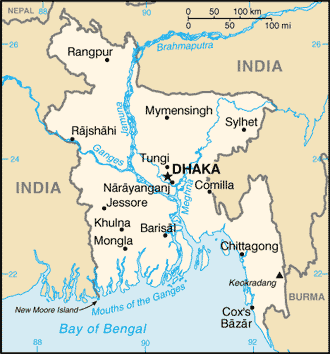
The topography of Bangladesh is isolated between three districts. The vast majority of the nation is ruled by the prolific Ganges-Brahmaputra delta; the northwest and focal parts of the nation are shaped by the Madhupur and the Barind levels. The upper east and southeast are home to evergreen slope ranges. The Ganges delta is framed by the conjunction of the Ganges (neighborhood name Padma or Pôdda), Brahmaputra (Jamuna or Jomuna), and Meghna waterways and their individual tributaries. The Ganges joins with the Jamuna (primary channel of the Brahmaputra) and later joins the Meghna, at last streaming into the Bay of Bengal. Bangladesh has 57 trans-limit waterways, making the determination of water issues to be politically entangled, by and large, as the nation is a lower riparian state to India.
Bangladesh is predominately rich fruitful level land. Most parts of it is under 12 m (39.4 ft) above ocean level, and it is evaluated that 10% of its property would be overwhelmed if the ocean level were to ascend by 1 m (3.28 ft). 17% of the nation is secured by woods and 12% is secured by slope frameworks. The nation's haor wetlands are of essentialness to worldwide natural science.
In southeastern Bangladesh, tests have been done since the 1960s to 'work with nature'. Development of cross dams has prompted a characteristic accumulation of sediment, making new land. With Dutch subsidizing, the Bangladeshi government started advancing the improvement of this new land in the late 1970s. The exertion has turned into a multi-organization attempt, building streets, courses, dikes, typhoon sanctuaries, toilets and lakes, and also disseminating area to pilgrims. It was normal that by fall 2010, the program would have assigned somewhere in the range of 27,000 sections of land (10,927 ha) to 21,000 families. With a rise of 1,064 m (3,491 ft), the most elevated pinnacle of Bangladesh is Keokradong, close to the outskirt with Myanmar.
Regulatory topography of Bangladesh:
Bangladesh is partitioned into eight manag
erial divisions, each named after their separate divisional central command: Barisal, Chittagong, Dhaka, Khulna, Mymensingh, Rajshahi, Rangpur, and Sylhet.
Divisions are subdivided into locale (zila). There are 64 locale in Bangladesh, each further subdivided into upazila (subdistricts) or thana. The zone inside each police headquarters, aside from those in metropolitan regions, is isolated into a few unions, with every union comprising of numerous towns. In the metropolitan territories, police headquarters are separated into wards, which are additionally isolated into mahallas.
There are no chosen authorities at the divisional or area levels, and the organization is made just out of government authorities. Coordinate races are held in every union (or ward) for an administrator and various individuals. In 1997, a parliamentary demonstration was passed to hold three seats (out of 12) in each union for female hopefuls.
nice man its nice to see a bangladeshi in here good luck
#untalented @steem-untalended here are some help
Downvoting a post can decrease pending rewards and make it less visible. Common reasons:
Submit
thanks
Downvoting a post can decrease pending rewards and make it less visible. Common reasons:
Submit
Hello @rakib143073433
We have given you our still tinnie-winnie upvote!
You have been spotted by @lobanana to possess rare gem!
So what can we do than to seal the deal, give you our tiny upvote and celebrate you, for everyone has something to offer.
We welcome you to the #untalented family. Feel free to come around for its a home with us. Flaws allowed, so relegate reservations and play with that beautiful mind of yours, let's tap into more hidden aspects of you. No average, no bum, just awesome you and the best version of YOU is a gift to humanity everytime. Stay awesome!
Join the steemgigs community on discord
https://discord.gg/CGuPyyT
#untalented is a branch of @steemgigs. If you would like to offer your service in building the dreams of other steemians, you can do so under #steemgigs.
However, if you want to experience full blown freedom and grow in confidence about your gifts and talents, share under #untalented.
We aim to create historical moments in the genre of touching lives and you can support us if you desire, by voting on steemgigs for witness. Simply click here
https://steemit.com/~witnesses
and type steemgigs in the first search box.

Just incase you find any level or form of gifts, talents, attempts at out-of-the-boxness, or any steemian low in confidence about their abilities, worth, etc; please don't let it slip emptily by.
Kindly call on me! Simply reply to any such post and add @steem-untalented or #untalented to your reply and i will be there to upvote, acknowledge, strengthen and encourage them.
Downvoting a post can decrease pending rewards and make it less visible. Common reasons:
Submit
sorry,
I did not understand, what is this..
Downvoting a post can decrease pending rewards and make it less visible. Common reasons:
Submit
It is simply encouraging you to become more original with your content cos you can do it
Downvoting a post can decrease pending rewards and make it less visible. Common reasons:
Submit